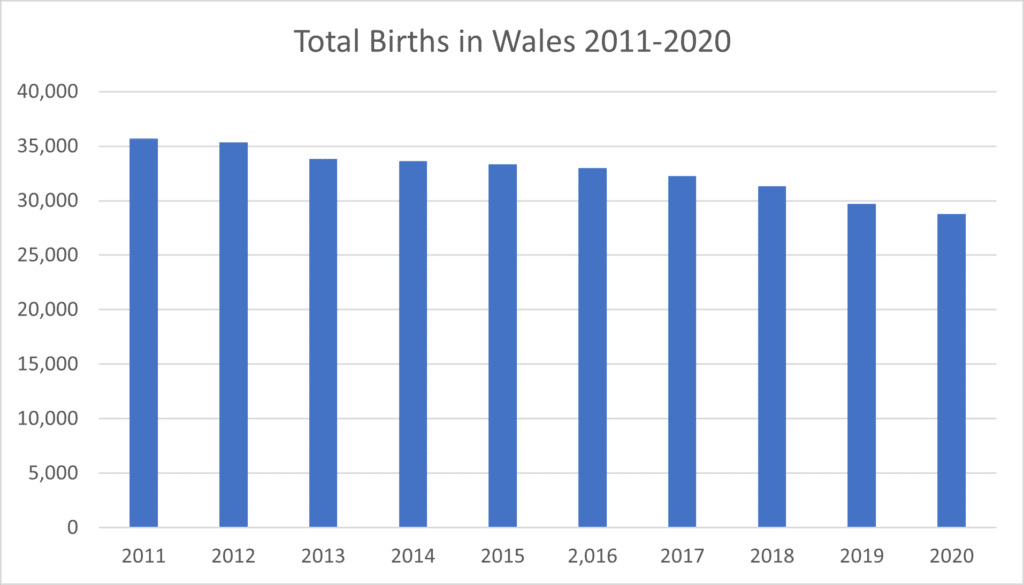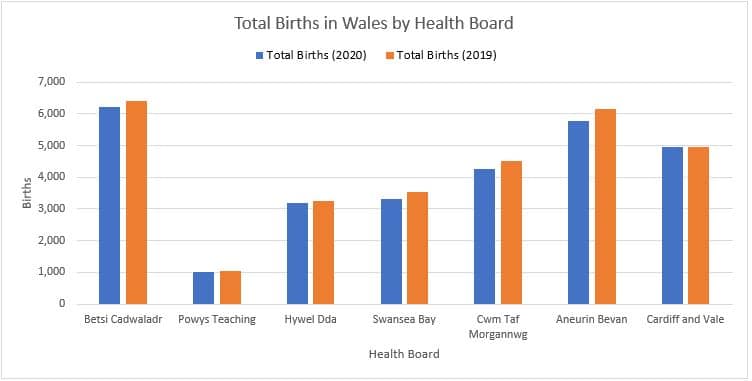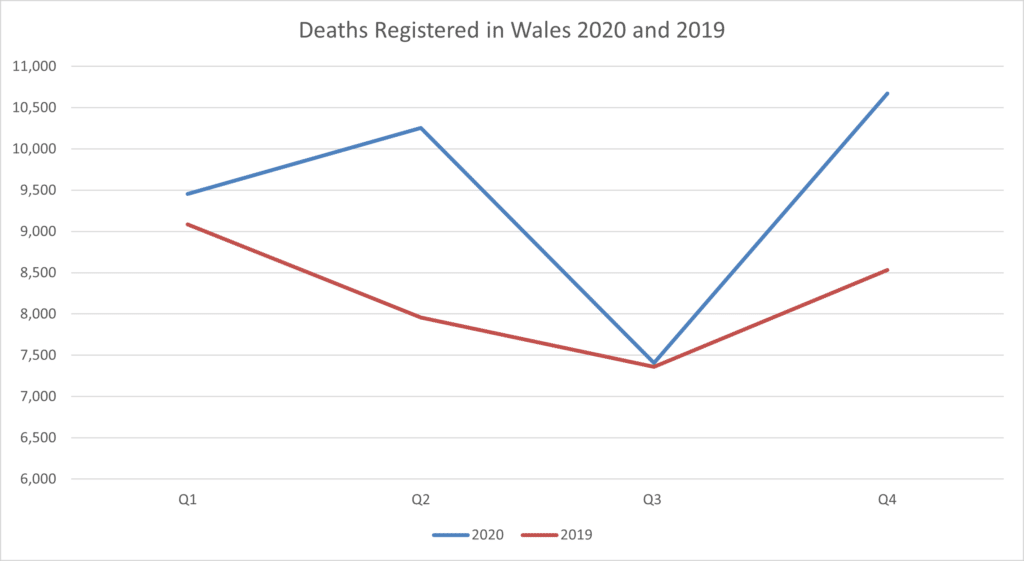In our latest series of posts we’ve been reviewing government data on parts of the UK during the pandemic year and comparing the trends to years prior. The third in our series covers Welsh demographic data and their services response to the challenge COVID-19 presented in the form of minimised contact and backlogs for appointment types.
Please note that unlike our previous UK registration analysis (see our separate posts on COVID’s effect on Scottish Registration and Northern Ireland Registration at the bottom of the page), the ONS have yet to publish marriage figures that separate England and Welsh based ceremonies, so we won’t be covering them here.
Births – 28,884 (2020) | 29,854 (2019) – NCCHD
Looking at the Maternity and Birth Statistics provided by Gov.Wales, overall births decreased 3% between 2019 and 2020. The figure for the most recent year was a noticeable drop from volumes at the start of the decade (a near 20% decrease in comparison to the 2011 figure), though this is in line with birth statistics leading up to 2020. The National Community Child Health Database (NCCHD), offered statistics displaying that births have fallen every year since 2011, the first year in it’s data set, with births dropping below 30,000 for the first time in 2019.

Locations for births however remained consistent with their 2019 counterparts. As displayed in the chart below, total births were similar across all locations, with the excess births in 2019 being visible for health boards like Aneurin Bevan and those in Swansea Bay.

Note: Unfortunately, as figures available are merged with England’s and are not available in a quarterly format, it’s difficult to discern if the number of births were reduced at certain times during 2020, for example lockdowns, so we haven’t explored that here.
Sources for the data used in this article:
Maternity and birth statistics: 2020 | GOV.WALES
Provisional births in England and Wales – Office for National Statistics (ons.gov.uk)
Deaths – 37,790 (2020) | 32,942 (2019) – ONS
2020 saw a 12% increase in deaths on the previous year, while more notably registering around 5,000 registrations higher than the year prior.
Reviewing the weekly data for the total deaths in England and Wales minus England’s values, deaths registered in Wales starts off higher but similar to it’s 2019 counterpart with a variance of under 500. This however expands as we reach quarter 2, which saw lockdown begin and the COVID pandemic reach it’s early peak. This is noticeable by the number of deaths expanding dramatically, rising 29% on the previous year with over 3,000 more deaths recorded. During this time, registrars would have tackled significant backlogs and reorganised their services to prioritise death registration at this time to take on the increased pressure.
For the third quarter, Welsh registrars recorded a significant drop in deaths recorded after the early COVID period. This return to levels previously seen in 2019 is inline with when birth registrations grew significantly in our other studies, giving services the time to manage backlogs for other services. This was before again rising as calls for a second lockdown grew in late autumn and winter, creating a variance of over 2,000 and growing over 25% against 2019. It’s also notable that the spike in deaths was greater in quarter 4 of 2020 than the initial COVID outbreak during quarter 2.

Sources for the data used in this article:
Deaths registered in England and Wales – Office for National Statistics (ons.gov.uk)
Stopford develop market leading solutions for registration services across the UK, supply over 100 services with online booking, diary management and certificate management solutions. View our entire product range on our registrar solutions page here.
To arrange a demo or request further information, get in touch via our contact form here.